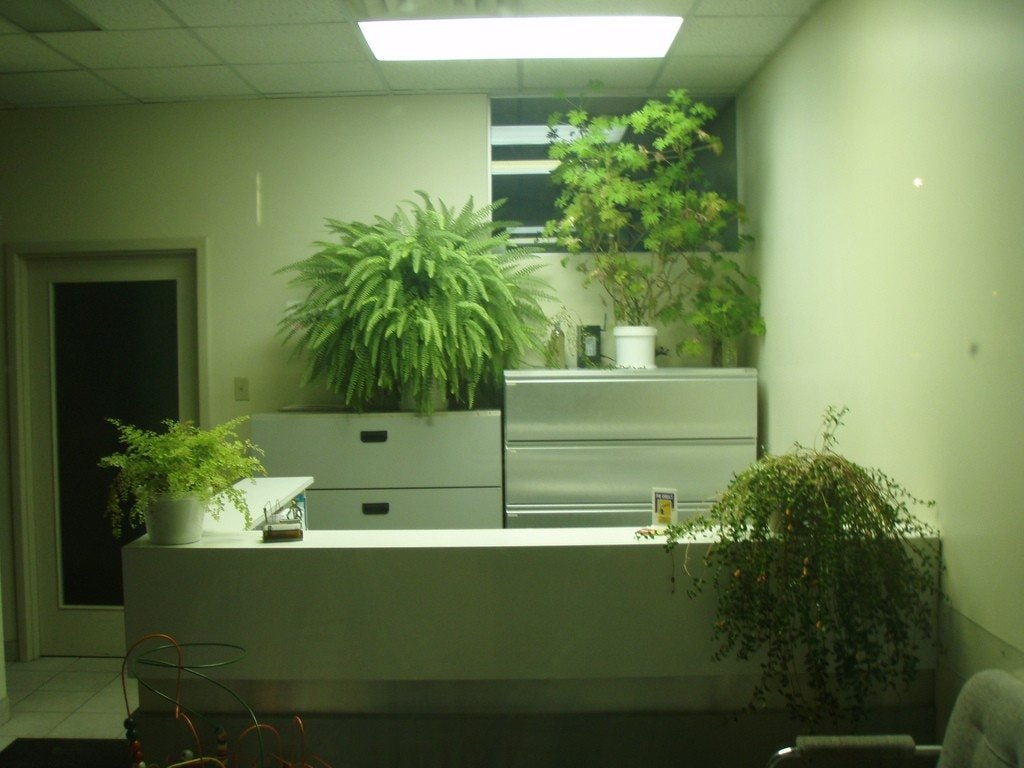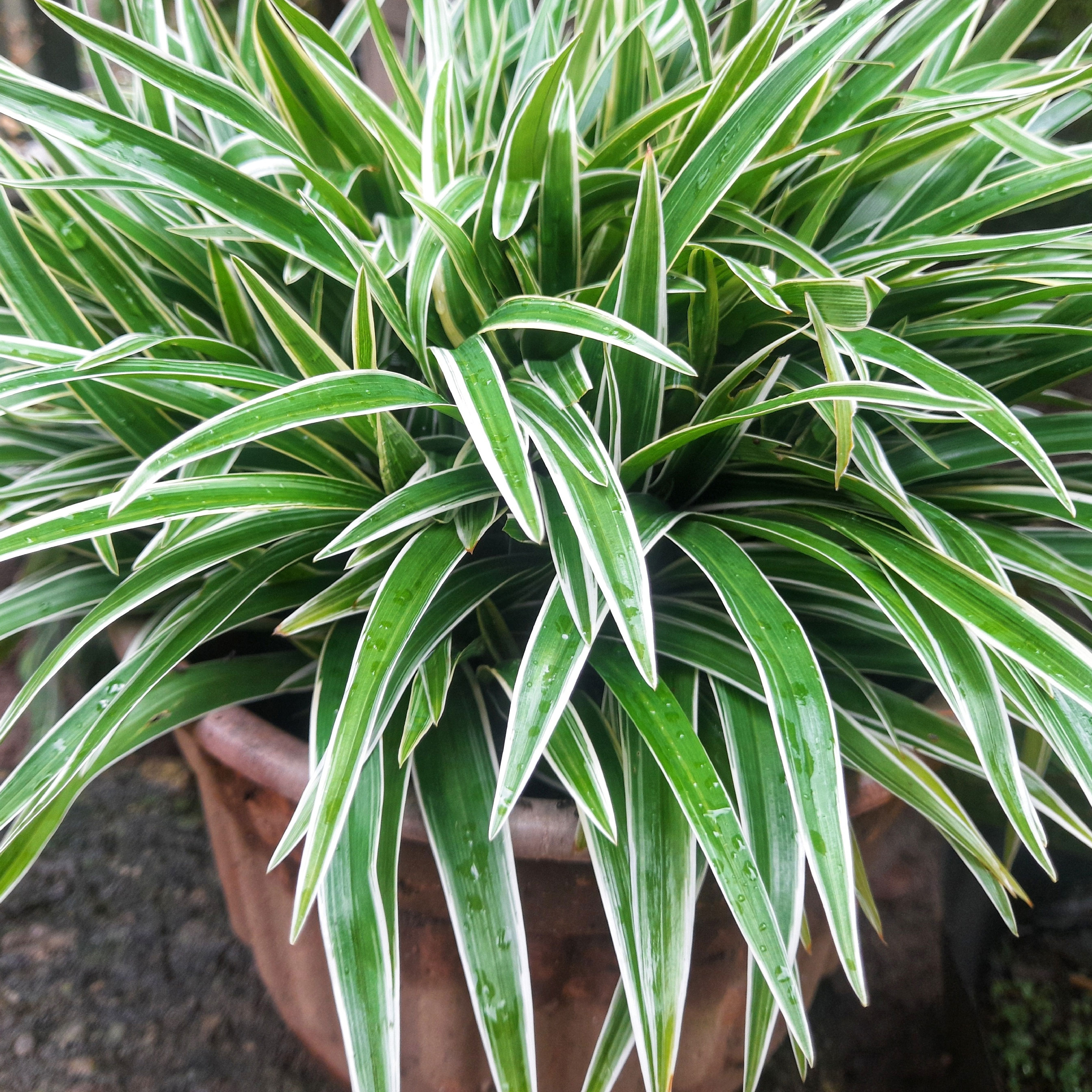Reviving Plants: How To Revive An Overgrown Plant


Office plants are often the most frequent victims of well-intentioned neglect. They are watered regularly and fed occasionally, but as they grow, very little thought is given as to how long the plant has been in the same pot or how big the plant has grown. Sooner or later, the plant's health starts to fail and no amount of proper watering and fertilizer can help an overgrown plant with its current problems. When a plant is dying from this kind of neglect, it needs some immediate TLC of another kind to bring the plant back. Let's look at how to revive a plant and how to how to replant a potted plant.
Strategic Pruning
One of the first steps you need to take for reviving plants is to prune both the top and the roots of the plant.
Pruning roots
If an overgrown plant is failing, there is a good chance that the plant is suffering from being root-bound. Root-bound is a condition where the roots have grown so tightly that they have started to tangle in on themselves. In some advanced cases, you will find that the soil in an overgrown plant's pot has been replaced with roots. There is no easy way to untangle a root-bound plant's roots, but fortunately, a plant is designed to regenerate itself. The easiest way to fix an overgrown plant's roots is to prune them. Start by taking the plant out of the pot. On the bottom of the compacted rootball, make a clean X about a quarter of the way into the rootball with a sharp knife. Tease apart the roots and remove any roots that have been cut loose. If you run into any sections that do not tease apart, repeat the process with that section. Keep going until the plant's root ball is again loose and healthy.
Pruning leaves and stems
The next step for reviving plants is to prune the top of the plant. Using a sharp pair of scissors or pruning shears, trim away any old growth on the plant. This is typically characterized by woody growth and sparse leaves. This growth may be tough to cut, so be careful. Next, remove any sickly growth on the overgrown plant. This is characterized by yellow leaves or a wilted appearance. Be sure to leave young growth in place. Young growth will be tender-looking and typically comes directly from the rootball. The young growth can have partial yellow leaves or brown edges on the leaves. This is okay and should repair itself once the plant is settled in its new pot.
How to Replant a Potted Plant
The next step in how to bring a plant back is to repot it. Find a pot that is 1 to 3 inches (2.5 to 7.5 cm.) larger around than the rootball. Fill the pot halfway with potting soil and then put an additional scoop of soil in the center of the pot, so you have a mound. Spread the roots of the plant over the soil mound and fill the pot until the roots are covered and the plant is sitting at the same level it was before. Water thoroughly to make sure there are no air pockets. Fill in the soil as necessary. Now that you know how to revive a plant, you can enjoy your house and office plants for many years to come. Better than reviving plants is never having to worry about it. Make repotting and pruning your indoor plants a yearly task and you will reduce the chances that you need to bring a plant back from near death.
Gardening tips, videos, info and more delivered right to your inbox!
Sign up for the Gardening Know How newsletter today and receive a free copy of our e-book "How to Grow Delicious Tomatoes".

Heather Rhoades founded Gardening Know How in 2007. She holds degrees from Cleveland State University and Northern Kentucky University. She is an avid gardener with a passion for community, and is a recipient of the Master Gardeners of Ohio Lifetime Achievement Award.
-
 Best Soil Tor Tomatoes: How To Cultivate The Perfect Blend & Add Amendments For A Bountiful Harvest
Best Soil Tor Tomatoes: How To Cultivate The Perfect Blend & Add Amendments For A Bountiful HarvestGive your tomato plants the foundation they need. Learn how to mix the ideal soil and choose the right amendments for your most abundant harvest yet.
By Amy Grant
-
 Want To Know How To Make A Spider Plant Bushier? 4 Secrets For Lush & Bushy Spiders
Want To Know How To Make A Spider Plant Bushier? 4 Secrets For Lush & Bushy SpidersAre you looking for ways to make your spider plant look bigger or more dramatic? Follow these quick and easy tips on how to make a spider plant bushier
By Teo Spengler
-
 8 Easy Care Houseplants That Live A Long Time
8 Easy Care Houseplants That Live A Long TimeClick here to learn about our 8 favorite low maintenance houseplants that can, with proper care, live a long time.
By Amy Grant
-
 How Often Should You Repot Plants?
How Often Should You Repot Plants?Escaping roots and shrinking leaves may mean your plant wants a new pot, but some like staying cramped and cozy.
By Mary Ellen Ellis
-
 Orange Flowering Houseplant Varieties With Tropical Flair
Orange Flowering Houseplant Varieties With Tropical FlairClick here to learn about some cheerful orange-blooming houseplants you can try growing.
By Mary Ellen Ellis
-
 Variegated Houseplants With Lovely Leaves
Variegated Houseplants With Lovely LeavesWhat are some of the best variegated houseplants to add to your collection? Click here to find out.
By Amy Grant
-
 Lovely, Lacy Indoor Foliage Plants
Lovely, Lacy Indoor Foliage PlantsClick here to learn about some houseplants with lacy foliage to add to your collection.
By Mary Ellen Ellis
-
 Best Christmas Houseplants And Plants For Winter Holidays
Best Christmas Houseplants And Plants For Winter HolidaysClick here for an idea of the best houseplants to use for holiday décor for Christmas, Hanukkah, Kwanzaa, and New Year’s.
By Laura Miller
-
 Best Big Houseplants To Create An Indoor Oasis
Best Big Houseplants To Create An Indoor OasisIf you have the space you may want to grow some large houseplants. Here are some ideas.
By Mary Ellen Ellis
-
 Relaxing Plants To Grow Indoors For A Calmer Mind
Relaxing Plants To Grow Indoors For A Calmer MindAre there houseplants that can help you to relax? Click here to find out.
By Laura Miller